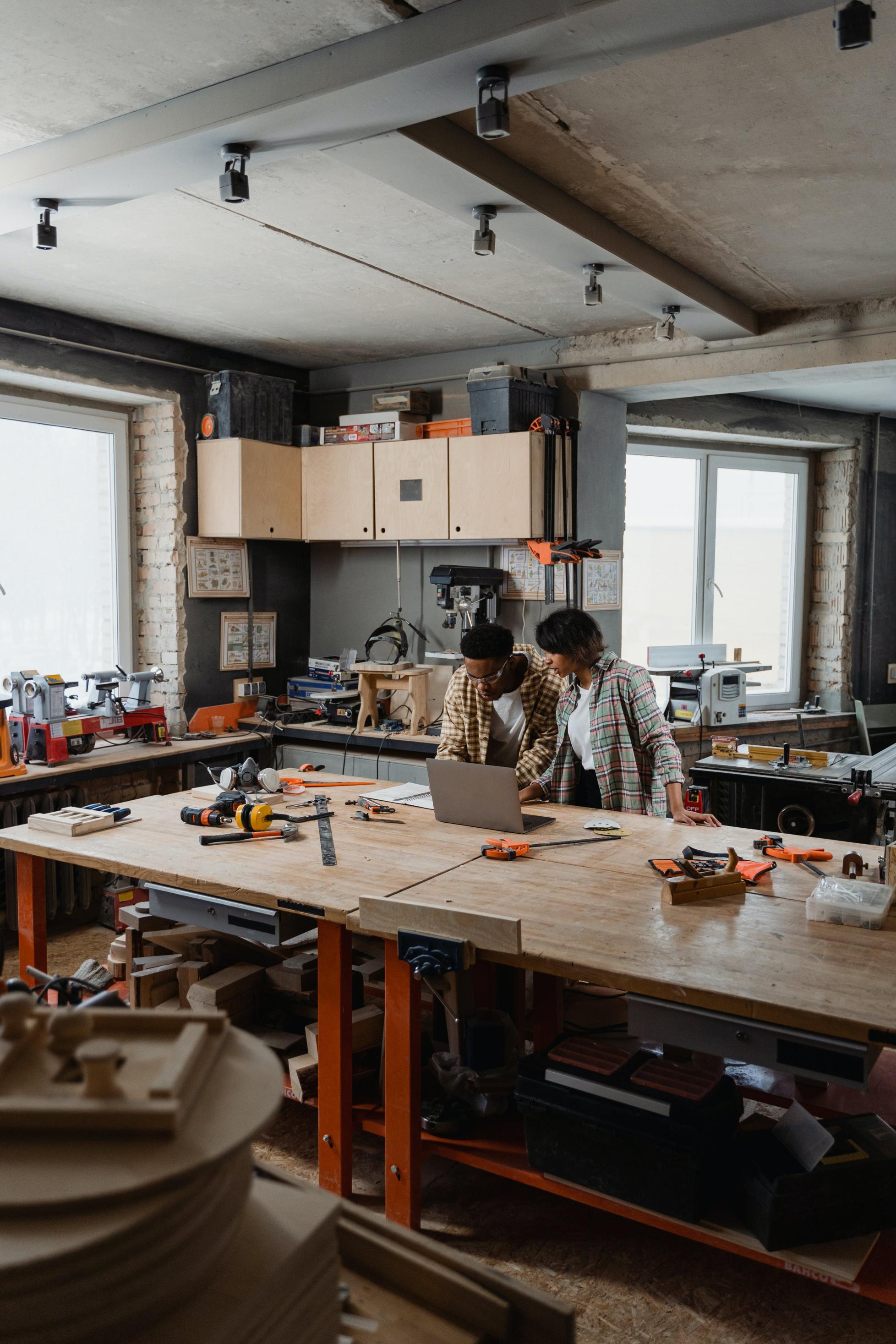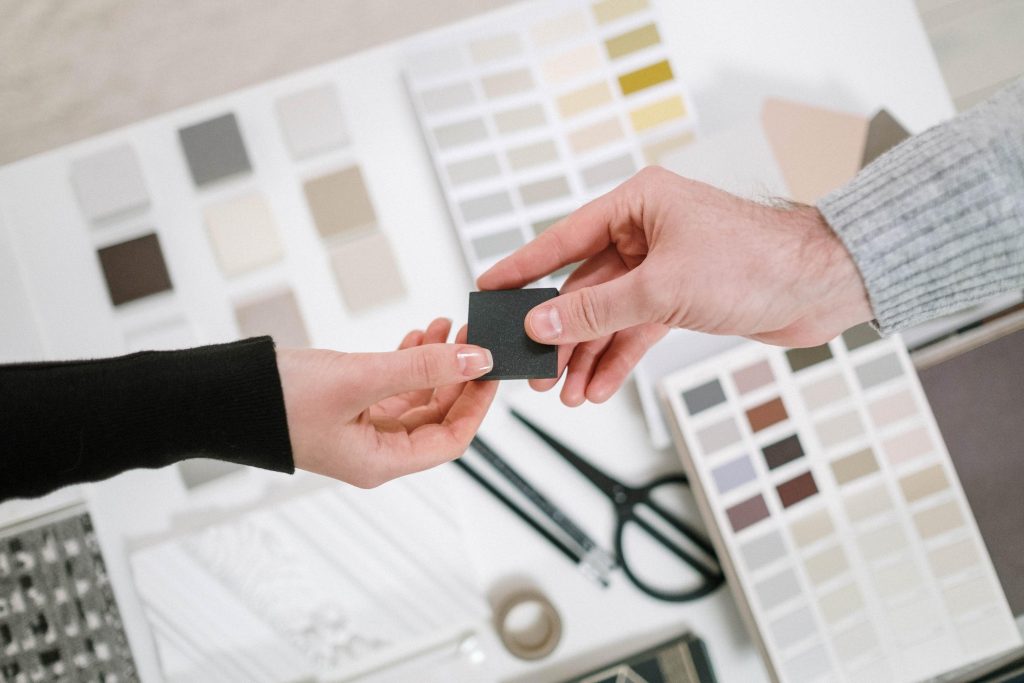Welcome to the world of digital design, where creativity meets collaboration in the most seamless way possible. As we delve into the intricacies of modern design tools, one name stands out for its exceptional capabilities: Figma. In this blog post, we will be exploring and „Understanding Figma for Collaborative Design,” a platform that has revolutionized how designers come together to create, share, and bring their visions to life.
Whether you’re a seasoned professional or just starting out, Figma’s intuitive interface and powerful features make it an indispensable tool in the design industry. Join us as we uncover the secrets to harnessing Figma for your collaborative projects.
Navigating the figma interface: tools and features for teamwork

Navigating the Figma Interface: Tools and Features for TeamworkEmbarking on a journey through Figma’s interface is akin to stepping into a digital atelier, tailored for the modern design team. Understanding Figma for collaborative design is pivotal as it stands at the forefront of innovation, blurring the lines between designers, developers, and stakeholders with its real-time collaborative environment. Mastering its tools and features not only enhances productivity but also fosters a synergy that is visible in the end product.
The canvas in Figma is a boundless playground where ideas morph into visuals. With vector networks that surpass traditional pen tools, Figma enables intricate designs to be refined with ease and precision.
Take, for example, the much-celebrated 'Auto Layout’ feature. It empowers teams to build adaptable components that react naturally to their content, much like a chameleon adapts to its environment. This responsiveness is integral when tailoring designs for various device sizes – essential in an era where digital experiences must be seamless across a myriad of screens.
Beyond the canvas, the collaborative heartbeat of Figma is most vivid in the 'Commenting’ tool. It allows for communication to flow effortlessly within the design file itself.
Stakeholders can pinpoint their feedback, attaching comments to specific elements, turning what could be an arduous exchange of emails into a streamlined conversation directly on the artifact. This unity of communication ensures that no detail is lost in translation, and every team member can witness and react to feedback in unison. Figma’s approach to teamwork is about making the complex simple, delivering a suite of tools that serve not just the individual designer but the holistic creative collective.
It is more than a design tool—it is the nexus where concepts are nurtured and evolved by every stakeholder, where every mouse click and keystroke weaves another thread into the tapestry of a project’s story. For those who are willing to dive deep into Figma’s interface, the reward is a workflow that is as collaborative as it is inventive, yielding results that are truly a testament to the power of teamwork.
Real-time collaboration in figma: techniques and best practices

### Real-time Collaboration in Figma: Techniques and Best PracticesFigma has revolutionized the design process with its intuitive collaborative features, allowing design teams to work together in real time, as effortlessly as if they were in the same room—even when they’re continents apart. Understanding Figma for collaborative design is akin to mastering the art of telepathy within a team, where ideas flow seamlessly through the digital ether, converging into a coherent design narrative. One of the core techniques that makes Figma a haven for collaboration is its living document functionality.
Rather than wrestling with conflicting file versions, teams can work simultaneously on a single source of truth. This live editing feature is like an open invitation to a design jam session, where each participant plays a unique role.
Imagine a scenario where a UX designer refines user flows while a UI designer paints pixels to perfection—all in harmony, without skipping a beat. As stakeholders observe and comment in real time, feedback becomes a catalyst for instant iteration, not a bottleneck waiting to happen after the fact.
Best practices in Figma collaboration also involve setting clear structure and guidelines. For example, using Figma’s team libraries effectively can avoid the design equivalent of a traffic jam. These libraries are the team’s shared foundation, storing reusable components and design systems.
They facilitate consistency and speed, much like having a set of well-organized tools at a craftsman’s fingertips. Furthermore, team members should embrace version history, a feature that serves as a time machine, allowing one to delve into the past to retrieve design explorations or simply to understand the evolution of the project.
Diving deeper into collaboration nuances, the artful implementation of Figma’s prototyping features can transform individual components into dynamic prototypes, bridging the gap between static design and interactive experience. This isn’t a solo ride—colleagues and clients can leave poignant anecdotes in the form of comments directly on the prototypes, which streamlines the journey from ideation to validation. Figma’s approach to real-time collaboration is not just a feature; it’s a vibrant design ecosystem that cultivates transparency, efficiency, and innovation.
By internalizing these techniques and best practices, teams can unleash a symphony of creative synergy that resonates with every stakeholder involved and echo through the final design outcomes, leaving an indelible mark in the digital landscape.
Integrating figma into the design process: from ideation to prototyping

In the vibrant world of design, collaboration forms the bedrock of innovative and successful projects. Figma arrives on the scene as a game-changer, a veritable Swiss Army knife in the realm of digital design tools.
The platform is a testament to the age-old adage that 'two heads are better than one’—but, in Figma’s case, it’s more like countless heads contributing seamlessly across continents in real-time. Integrating Figma into the design process symbolizes a leap from solitary ideation to a shared creative journey, laying out a buffet of possibilities from the initial concept to the final, polished prototype. To fully grasp the power of Figma for collaborative design, one must dive into its myriad of features that encourage designers, developers, and stakeholders to commune under the umbrella of creativity.
Imagine a world where wireframes can evolve live before the eyes of an international team, where feedback is as immediate as a gust of wind, and changes are harmonized instantaneously across the canvas. This is the world Figma offers. A world where a designer in San Francisco can adjust a palette, and mere milliseconds later, a colleague in Tokyo sees the update — no refresh button necessary.
This real-time synchronicity isn’t simply convenient; it’s revolutionary, truncating the feedback loop and enhancing the efficiency of the design process. Moreover, Figma takes prototyping to new heights with its intuitive interface.
Gone are the days when prototyping was a task reserved for those with a deep understanding of complex software. Figma demystifies this stage, inviting users to breathe life into static designs with animations, transitions, and interactions that feel buttery smooth and utterly natural. Even stakeholders, often left to navigate the treacherous waters of abstraction, can interact with a near-finished product as if it were already live, making for a more cohesive feedback experience.
Whether it’s a designer prototyping a transition or a project manager pinpointing a user experience issue, Figma provides a playground for innovation that’s as wide as it is deep. Through the lens of Figma, the design process is no longer a mere relay race of passing the baton but rather a symphony with each contributor playing in harmony.
It invites all involved to a proverbial round table of design, eliminating silos and fostering a shared ownership that is both refreshing and deeply effective. Understanding Figma for collaborative design is a step toward not just a more streamlined workflow, but a future where the barriers to creative execution are all but dismantled. As the digital tapestry of our world becomes richer and more interconnected, tools like Figma aren’t just useful; they are essential to the fabric of a thriving, collaborative design culture.
Mastering advanced figma functions for enhanced team productivity
## Mastering Advanced Figma Functions for Enhanced Team ProductivityWhen it comes to collaborative design, understanding Figma is like unlocking a new level in a game – you suddenly have access to powerful tools that can significantly enhance your team’s productivity. This sophisticated web-based platform bursts with features that facilitate seamless team collaboration, allowing designers, developers, and stakeholders to work in unison. Delving into its advanced functionalities not only accelerates the design process but also adds a layer of professionalism that’s palpable in the final product.
One of the key advanced features of Figma is the use of Components and Variants. Imagine you’re building a digital jigsaw puzzle; Components are your individual puzzle pieces that can be reused across your projects.
When you alter a master component, the changes ripple through wherever it’s utilized, ensuring consistency and saving precious time. Variants step this up a notch, allowing you to create different states of a component – such as buttons with varying text or colors – within the same family.
This reduces the need for duplicating elements and keeps the design file neat, which is a boon for team sanity and project scalability. It’s much like having an efficient librarian who can pull out any version of a book you need, without the mess of scattered pages everywhere. Auto-layout is another sophisticated function that proves to be a game-changer.
It provides the flexibility to design components that work with content of any size, akin to a stretchy fabric that maintains its shape irrespective of what it holds. With this, layouts can dynamically shift and adapt, making it a dream for responsiveness. No more sweating over alignment or resizing – components behave predictably across different screen sizes.
Auto-layout works its magic behind the scenes, making the designer appear to be a wizard who effortlessly conjures up perfectly responsive interfaces. By grasping the power of Figma’s advanced features, teams can move away from the old ways of siloed tasks and inefficient workflows.
It propels the collaborative design process into a state of flow where creativity and efficiency coalesce. Designers are unshackled from the mundane and can focus on innovation, while stakeholders get to engage with a product that’s polished and well-crafted. Thus, mastery over these functions isn’t just about knowing the tools; it’s about weaving them into the very fabric of your collaborative spirit and letting the tapestry of productivity unfold.
Nasza rekomendacja video
To sum up
In summary, Figma has revolutionized collaborative design by providing a cloud-based platform that enables designers to work together in real-time. Its intuitive interface and powerful tools facilitate seamless teamwork, allowing for efficient iteration and feedback. Understanding Figma is essential for modern design teams looking to streamline their workflow and produce high-quality designs collaboratively.
FAQ
What is Figma and how is it revolutionizing the collaborative design process?
Figma is a cloud-based design tool that enables multiple users to collaborate in real-time on interface design projects, such as websites and apps. It’s revolutionizing the collaborative design process by allowing designers, developers, and stakeholders to work together seamlessly across the entire project lifecycle, from ideation to prototyping to feedback, without the need for syncing or exporting files. Its intuitive interface and powerful features, such as vector networks and auto layout, make it a go-to solution for modern design teams looking to streamline their workflow and enhance productivity.
How does Figma facilitate real-time collaboration among design team members?
Figma facilitates real-time collaboration among design team members by allowing multiple users to work on the same design file simultaneously from different locations. Its cloud-based platform updates in real time, so any changes made by one user are immediately visible to all others. Additionally, Figma offers features like commenting, version history, and live cursor tracking, which enhance communication and streamline the collaborative design process.
What are the key features of Figma that support teamwork and communication?
Figma’s key features that support teamwork and communication include real-time collaboration, where multiple users can work on the same design file simultaneously; commenting and feedback tools that allow team members to leave notes directly on the design; and a version history feature that tracks changes and facilitates design iteration. Additionally, Figma’s team libraries enable the sharing of design components and styles across different projects, ensuring consistency and efficiency in team workflows.
How can designers use Figma to create consistent design systems and libraries collaboratively?
Designers can use Figma to create consistent design systems by building a shared library of reusable components and styles, which ensures uniformity across different projects. The collaborative nature of Figma allows multiple designers to work on the same files in real-time, maintaining consistency and streamlining the design process. Additionally, Figma’s version control and team commenting features support effective communication and iterative improvements within design teams.
What are the best practices for managing a collaborative project in Figma?
Best practices for managing a collaborative project in Figma include establishing clear roles and permissions to maintain organization, using a consistent naming convention for files and components to ensure clarity, and leveraging Figma’s commenting and version history features to facilitate communication and track changes. Regularly scheduled check-ins and reviews can also help keep the team aligned and the project on track.
How does Figma integrate with other tools and platforms to enhance the collaborative workflow?
Figma integrates with other tools and platforms through a robust set of APIs, plugins, and third-party extensions that enable seamless collaboration across different stages of the design process. It offers direct integrations with platforms like Slack for communication, Jira for project management, and GitHub for version control, allowing team members to share, comment, and update designs in real time within their preferred work environments. This interconnected ecosystem streamlines workflows, ensuring that all stakeholders stay aligned and can contribute efficiently to the design and development process.

